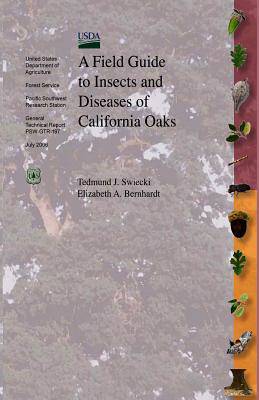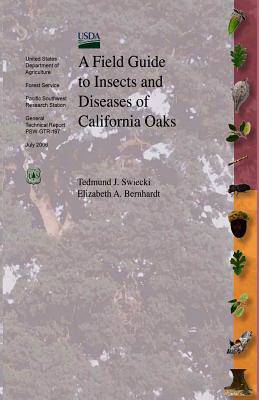
- Afhalen na 1 uur in een winkel met voorraad
- Gratis thuislevering in België vanaf € 30
- Ruim aanbod met 7 miljoen producten
- Afhalen na 1 uur in een winkel met voorraad
- Gratis thuislevering in België vanaf € 30
- Ruim aanbod met 7 miljoen producten
Zoeken
A Field Guide to Insects and Diseases of California Oaks
Elizabeth A Bernhardt, U S Department of Agriculture, Tedmund J Swieki
Paperback | Engels
€ 52,45
+ 104 punten
Omschrijving
This FULL COLOR publication focuses on the relatively small number of microorganisms (primarily fungi) and arthropods (primarily insects) that are capable of causing noticeable damage to oaks in California. We have included agents that cause serious damage to oaks, as well as some common agents that produce conspicuous impacts even if they are not especially detrimental to oak health. Conspicuous but relatively inconsequential agents, such as cynipid gall wasps, often attract more attention than more cryptic agents that can severely impact oak health and structural integrity, such as canker rot fungi. However, some agents that have little or no impact on oak health may still create a nuisance in urban settings as the result of materials that are shed (e.g., sap) or because they adversely affect the appearance of oaks in the landscape. This publication is primarily intended to help arborists, land managers, pest management specialists, and other professionals identify and assess the likely impacts of common agents that attack oaks in California. While we have incorporated enough technical information to make this document useful for professionals, property owners and other members of the general public can also use this publication to better understand common oak diseases and pests. A much more comprehensive compilation of agents that feed on, colonize, and/or damage oaks can be found in the California Oak Disease and Arthropod (CODA) database (currently available at http: //Phytosphere.com/coda)
Specificaties
Betrokkenen
- Auteur(s):
- Uitgeverij:
Inhoud
- Aantal bladzijden:
- 154
- Taal:
- Engels
Eigenschappen
- Productcode (EAN):
- 9781475277562
- Verschijningsdatum:
- 29/04/2012
- Uitvoering:
- Paperback
- Formaat:
- Trade paperback (VS)
- Afmetingen:
- 140 mm x 216 mm
- Gewicht:
- 185 g

Alleen bij Standaard Boekhandel
+ 104 punten op je klantenkaart van Standaard Boekhandel
Beoordelingen
We publiceren alleen reviews die voldoen aan de voorwaarden voor reviews. Bekijk onze voorwaarden voor reviews.








